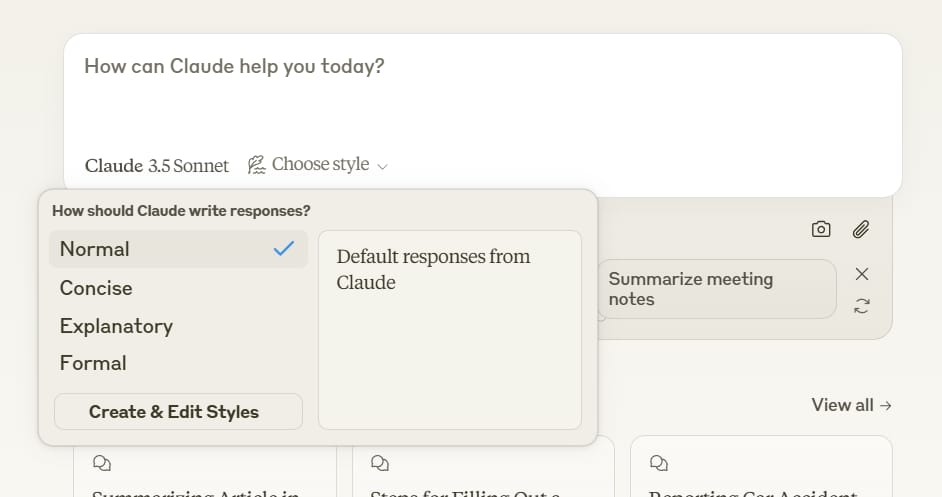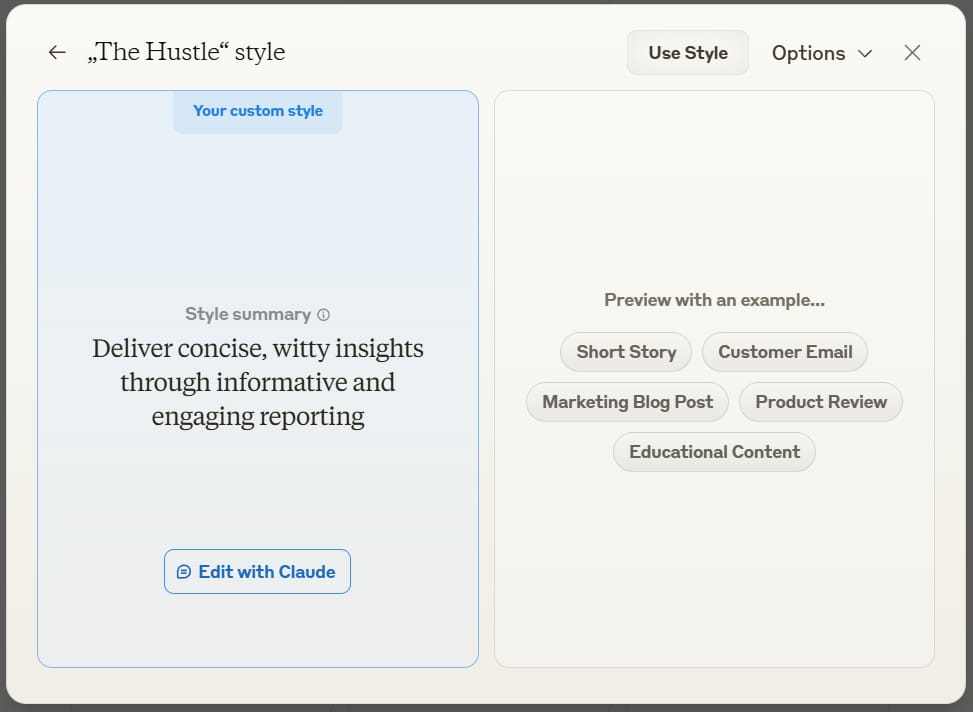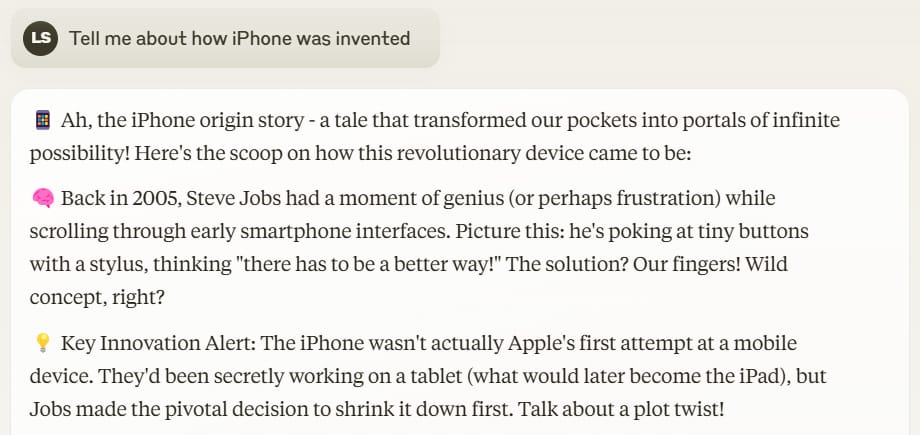- Aiyoudaily
- Posts
- How to write so that your brand is instantly recognizable?
How to write so that your brand is instantly recognizable?
Hello! OpenAI, Anthropic, and other AI companies are rolling downhill like a snowball, creating new tools, models, or improvements every week. It's easy to get lost in such abundance, so we're coming to your inbox to help you untangle these knots.

In today's newsletter:
New ChatGPT feature for quick and detailed research
Did DeepSeek copy OpenAI?
How to use Claude Styles?
The Simplest Way To Create and Launch AI Agents
Imagine if ChatGPT and Zapier had a baby. It’d be ridiculously smart… and probably named Lindy.
With Lindy, you can spin up AI agents in minutes to handle all the stuff you’d rather not—like lead qual, cold outreach, web scraping, and other “ugh” tasks. It’s like hiring a whole team that never sleeps, never complains, and never asks for PTO.
Lindy’s agents are ready to take on support tickets, data entry, lead enrichment, scheduling, and more. All so you can get back to the fun part: building your business.
Ready to hand off the busy work? Build your first AI agent today and join thousands of businesses already saving time (and sanity) with automation that actually works.
Deep Research: research that would take hours is now done in 5 minutes
OpenAI has introduced Deep Research, a new ChatGPT feature that can conduct in-depth research on the internet and present conclusions with sources in just 5–30 minutes (which would take hours to do manually!). This is the first serious step toward automating complex tasks.
Why is Deep Research noteworthy?
Unlike the usual ChatGPT, which provides quick answers, Deep Research is designed for multi-layered information analysis. This means that it browses hundreds of sources, processes texts, PDFs, images, and provides detailed reports with sources. This is especially useful for people working in finance, politics, science, and engineering, as well as anyone else looking for detailed information.
The engine behind these features is a specially optimized o3 model that can not only collect but also understand and summarize information. It outperforms previous models and competing systems, achieving a score of 26.6% on the Humanity's Last Exam test, while other AI models did not even reach 7%.
What does this mean?
Deep Research is changing the way we search for information. Instead of superficial answers, it is capable of performing in-depth analysis and providing reliable, citable results. The feature is currently available to Pro users ($200/month), but should soon be available to Plus and Team plans as well.
HEADLINES
Did DeepSeek cheat? Microsoft claims to have evidence that DeepSeek illegally appropriated OpenAI's confidential data and used it to improve its R1 model. It is believed that DeepSeek received much more data than it was allowed to in the fall, thus bypassing the expensive and complex process of training artificial intelligence.
Stop AI attacks: Anthropic has introduced a new AI security system that blocked 95.6% of sophisticated attacks and withstood more than 3,000 hours of unsuccessful attempts to hack it. The company wants to further strengthen its protection and is inviting everyone to try out this technology until February 10.
OpenAI o3-mini: OpenAI has introduced o3-mini, a new, economical AI model that gives free users access to advanced reasoning capabilities and paid users up to 150 messages per day. It is 24% faster than o1, particularly strong in mathematics and programming, and costs 63% less to run. This is an important step ahead of the upcoming launch of the full o3 version.
Fewer lung diseases: Australian scientists have developed a new AI model that makes it easier to diagnose lung diseases. It achieves 96.7% accuracy in detecting pneumonia, COVID-19, and other diseases from ultrasound images. The model not only outperforms previous tools, but also explains its decisions to radiologists, speeding up the diagnosis process.
AI in practice: How to write so that your brand is instantly recognizable?
It's no secret that the responses of typical artificial intelligence language models often sound very robotic. This makes it difficult to convey the tone of your brand, as you have to manually adjust the sound or be able to come up with perfect prompts on the fly.
With Claude, you can maintain your brand's tone much more easily by using Claude Styles. Let's see how to do it.
Step #1: Sign in
Sign in to Claude to submit your queries.
Step #2: Try Claude Styles
To access Styles, click the "Choose style" button next to the query input. Try preset options such as "Concise," "Explanatory," and "Formal" to see how they change Claude's responses to different types of content.

Step #3: Enter your style
Click Create & Edit Styles -> Create Custom Style. Instead of a style description, add 3-4 writing samples that consistently reflect your desired tone.
The examples should be similar—several clearly defined styles work better than one universal style. In this case, I would choose to submit excerpts from The Hustle newsletter.

Step #4: Try out the style
Go straight to the query field and try out the new style.
I think you've got the hang of it!

Step #5: Edit the style
If necessary, edit the style by selecting "Edit style manually" in the "Options" section. You can change both the style description and the examples provided earlier.
By the way, it's best to create separate styles for different types of content (emails, social media posts, documents). The more accurate your examples are, the better Claude will replicate the style.
That’s it for today’s aiyoudaily 📚
If this issue helped you, share it with one friend who geeks out about AI too 🚀

